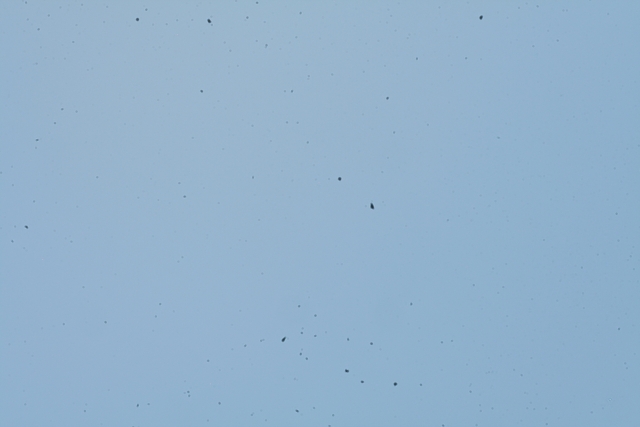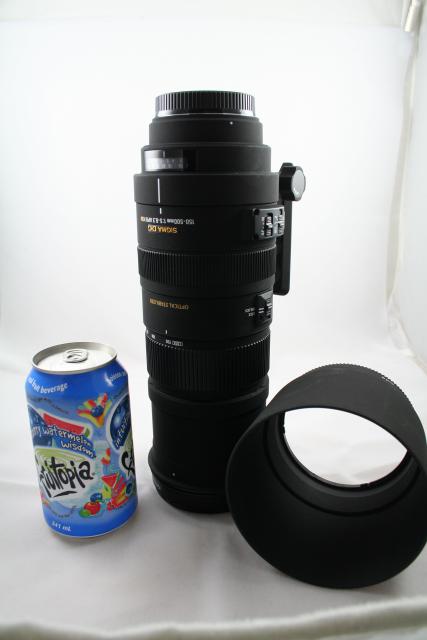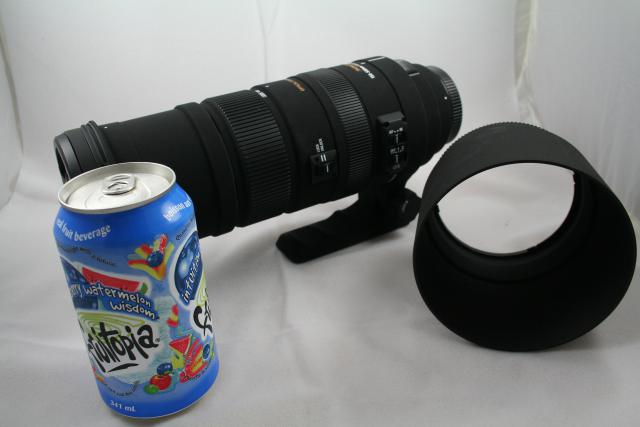demo
Sensor Cleaning
ktuli — Wed, 08/08/2012 - 21:11
OK - this will be a boring post for most folks, but what the heck...
As you may have noticed in many of the super-macro shots I've shared recently, I have some dirt spots on my sensor on my 7D. Sometimes I will fix them in Photoshop by simply selecting them and doing a content-aware fill on them - it works like a charm almost every time. However, the 7D has about 17 or more spots, and fixing each of them every time is time consuming and kind of annoying.
So I finally broke down and bought a sensor cleaning kit. I decided on the Visible Dust kit. It comes with an LED illuminated sensor loupe that allows you to look closely at your sensor to see exactly what the problem is, a brush type cleaner, swabs for wet cleaning of both the sensor and the focusing screen, and of course the cleaning liquid for wet cleaning.
There are plenty of great videos out there for how to clean your camera, so I'm not going to try and bore you with typing out all the instructions, but I will show some of the results...
 Camera 1: Before |
 Camera 1: After Dry Cleaning |
 Camera 1: After Wet Cleaning |
 |
||
 Camera 2: Before |
 Camera 2: After Dry Cleaning |
 Camera 2: After Wet Cleaning |
A couple of things to point out here. First, for the first two test shots for both cameras, I used the sky, but by the time I was done with the cleaning, it had gotten dark enough that that wasn't a useful thing to shoot, so I just shot a piece of paper instead - the difference in yellow color comes from different color temperature settings on the cameras. Second, you will notice on the 'After Dry Cleaning' shots, there is a lot of smeared lines on the sensor - apparently I misused the cleaning brush and smeared lubricant onto the sensor. I don't necessarily think this is a problem with the product so much as misuse on my part. I will have to try again and see if I continue to have that problem. However, as you can see, the wet cleaning worked wonders on both sensors - the one still has a few tiny spots left on it, but compared to the 'Before' it is like night and day!
Oh, and even though I said I wouldn't bore you with the details, here is a quick rundown of what I did for the cleaning process:
- Take test shot (smallest aperture possible, defocused, semi-long exposure, move camera during exposure, aimed at a relatively uniform bright surface - ie: the sky)
- Use blower bulb to dislodge and loose particles
- Use camera's sensor cleaning mode to lock up the mirror
- Use LED illuminated sensor loupe to inspect the sensor
- Drop the camera's mirror back into place
- Use Actic Butterfly brush to dislodge additional particles from the focus screen and mirror
- Use camera's sensor cleaning mode to lock up the mirror
- Use Arctic Butterfly brush on sensor
- Use blower bulb one more time
- Take another test shot
- Use Focus Screen Swab and cleaning solution to clean the focus screen
- Use camera's sensor cleaning mode to lock up the mirror
- Use Sensor Cleaning Swab and cleaning solution to clean the sensor
- Take a final test shot
All in all, this ended up being not too bad. I was a bit nervous when I noticed the smears after the dry cleaning, but the wet cleaning was much simpler and easier than I thought. I was worried I would damage the sensor, but it seems that as long as you are prepared and cautious, it really isn't such a huge risk.
Now I just need to get around to doing the same on the 7D...
- Bill
New Lens (part II)
ktuli — Thu, 03/04/2010 - 21:29
"Get used to it Marge, from now on we're going to spell everything with letters" - Homer Simpson.
Let's talk a little more about the new lens.
It's full name is Sigma 150-500mm f/5-6.3 APO DG OS HSM

So what do all those letters mean?
APO == Apochromatic - which means uh... well... it means we'll let wikipedia explain
DG == Digital [Some Word that Starts with G] - which according to Sigma basically means the lens is "ideal for Digital SLRs" and have "large-aperture lenses with wide angles and short minimum focusing distances".
OS == Optical Stabilization (which apparently is a word I always misspell the first time I type it) and was discussed a little here
HSM == Hyper Sonic Motor. This means the motor is driven by ultrasonic waves and it makes auto focusing, precise, silent and high-speed.
All those letters add up for a really nice lens. And as you can tell by the photo, a very large lens.
I spent the day thinking of something that would work well to compare the lens to, and I thought of a soda can. Well, it turns out that the only soda can we have in the house is from the last can of Fruitopia we have left. We need to restock, but that's a whole different story.
These shots are of the lens at its shortest length without the hood attached. But I included the hood to give an idea of the width of the lens at the front.
Impressive. Intimidating.

It looks like the plan is definitely to get to the zoo this weekend, so hopefully I'll have some nice photos to share from that.
- Bill



